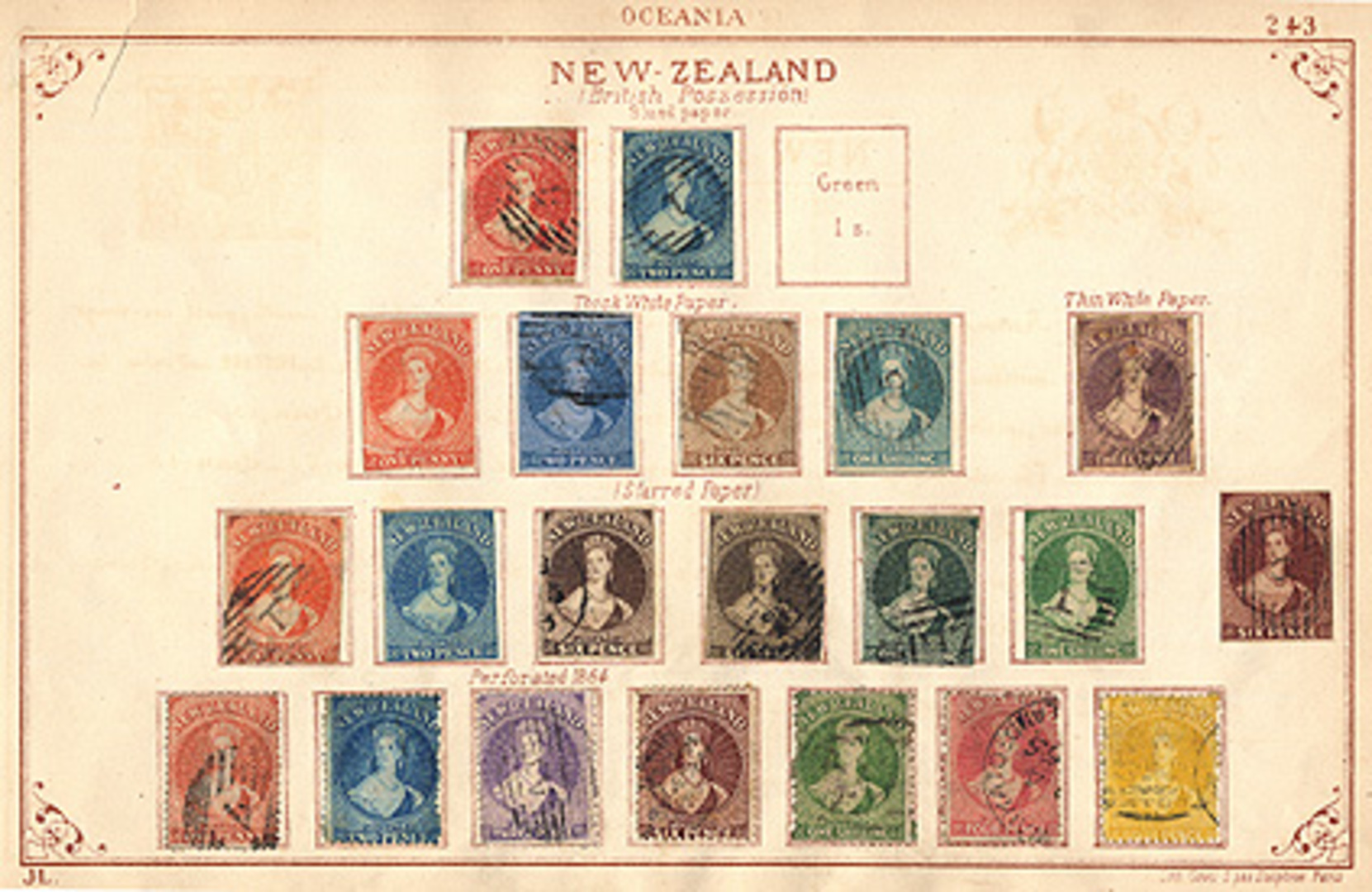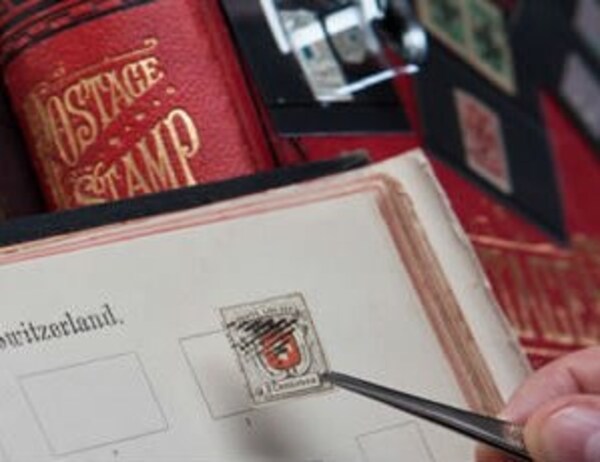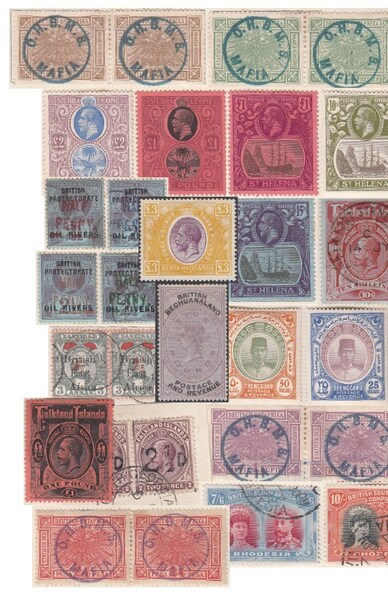From the early 1850s, there was enough interest in stamps to cause various dealers in antiquities, curios or coins to see an opportunity in making a living from catering for these new collectors. Among the earliest stamp dealers were: the Brussel's antiquities dealer J.B. Moens, who became a dealer in 1852; William S. Lincoln of London, who became a schoolboy collector/dealer in 1853; and Stanley Gibbons of Plymouth, who in 1856 took a portion of his father's pharmacy, to become a dealer at the ripe old age of sixteen.
The first stamp list was created in 1861 by Berger-Levrault of Strasberg. Other price lists followed in 1861, but the stamp-collecting world had to wait until the following year, for its first stamp album. Amongst the earliest of the pioneer Stamp Dealers stands Justin Lallier (1823-1873), a Parisian dealer, noted French archaeologist and creator of one of the most important early albums in 1862. First published in French in August 1862, with spaces for 1,200 stamps, and later that same year was published in English, as the first English language album.
In the drab world of the 1840s and 1850s, stamps stood out for their colour. The coal-tar aniline dyes that gave richness to the colours of the 'gilded age' were discovered only in 1856. They did not affect the public until a decade or more later. Lithographs became popular in the late 1830s, but did not move into mass production hand colouring until the 1860s.
At the same time, stamps also represented romance and adventure. The Californian gold rush of the late 1840s, was followed by another - a world away in distant Australia. Explorers and Missionaries began to fill in the blanks, on continent after continent. Now collectors could fill in blanks for themselves!
Few collections exist in these early albums, but those that do almost always have the stamps glued to the page. Hinges had not been invented, or the actual requirement for them! Such collections often contain what are now elusive and valuable stamps, but in those early days came to buyers much more readily.
Philately, in those early days, with its focus on 'one of each' collecting, did not closely resemble the modern day hobby. Despite a growth in specialised literature, Philatelic Societies and exhibitions over the following decades, a great leap was to take place in the world of technical collecting. We can lay much of the plaudits for this at the door of Ludovic Lindsay, 26th Earl of Crawford, who was by all accounts a charming polymath. His boyhood interest in stamp collecting had vanished, and having built his own observatory and led astronomical expeditions to Spain and Mauritius, he was elected to the Royal Society at the age of thirty.
Attending a Sotheby's sale in 1899, he chanced upon a fat stamp album, which he immediately decided to purchase (the album had belonged to Col. John Chard VC, hero of the Zulu attacks on Rorke's Drift). He turned his fine mind to stamp collecting, and only eleven years later became the President of the Philatelic Society in London.
His technical approach to collecting differed from the prevailing trends, as he put together everything connected with the production of a stamp; from the earliest drawings, essays, proofs, trials, as well as the changes in printing methods, papers, perforations and inks, amongst much else. When such a distinguished bibliophile and Fellow of the Royal Society (as well as the current Prince of Wales), took such a keen interest in stamp collecting, philately could no longer be disregarded and sniffed-at as a childish pastime!


 General
General
 General
General
 General
General